Rare Nice Badge for the Graf Zeppelin LZ 127 Landing at Basel, 1930
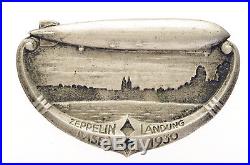
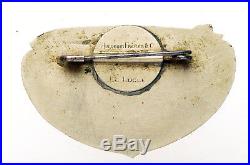
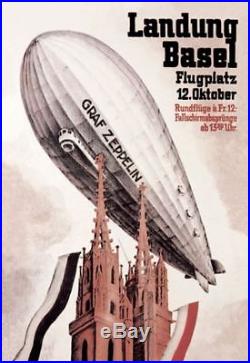
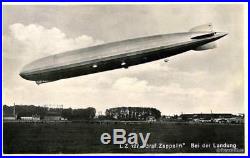
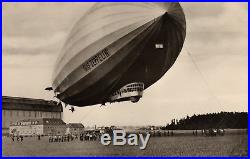

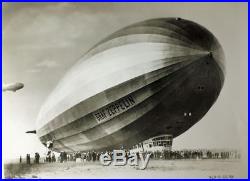
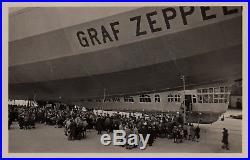
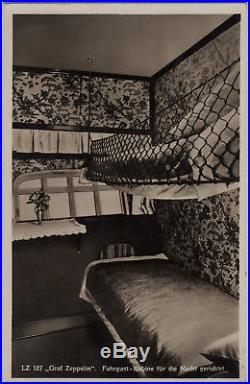
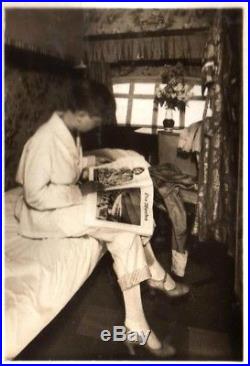

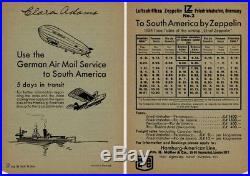

Rare Nice Badge for the “Graf Zeppelin” LZ 127 Landing at Basel, 1930. 28.5 mm x 45.5 mm, horizontal pinback. Weight: 18.36 g. Due to the landing of the Airship LZ 127 “Graf Zeppelin” in Basel in 1930. Made by Huguenin Fréres & Cie. Obv: ZEPPELIN LANDUNG / BASEL 1930. Flying over the River Rhine and. Above incuse panorama of Basel. Huguenin Fréres & Cie. A historical thing, in memory of one of the most. Successful airship project of Germany. Only a badge is for sale. The rest of the pictures are for illustrative purposes only. LZ 127 Graf Zeppelin (Deutsches Luftschiff Zeppelin #127; Registration: D-LZ 127) was a German-built and -operated, passenger-carrying, hydrogen-filled, rigid airship which operated commercially from 1928 to 1937. When it entered commercial service in 1928, it became the first commercial passenger transatlantic flight service in the world. It was named after the German pioneer of airships, Ferdinand von Zeppelin, who was a count (Graf) in the German nobility. During its operating life, the airship made 590 flights covering more than 1.7 million kilometers (over 1 million miles). It was designed to be operated by a crew of 36 officers and men. The LZ 127 was the longest rigid airship at the time of its completion and was only surpassed by the USS Akron in 1931. It was scrapped for fighter plane parts in 1940. LZ 127 Graf Zeppelin. The LZ 127 was christened Graf Zeppelin by Countess Brandenstein-Zeppelin on 8 July 1928, the 90th anniversary of the birth of her father Ferdinand. The Graf Zeppelin’s operational career spanned almost nine years from first flight in September 1928 until its last in June 1937. During that period, the airship was operated first by the Zeppelin Company’s commercial flight arm, the Deutsche Luftschiffahrts-Aktiengesellschaft (German Airship Travel Corporation, DELAG) in conjunction with the Hamburg-American Line (HAPAG), and for the final two years by the Deutsche Zeppelin Reederei GmbH (DZR), a company established by Hermann Göring in March 1935 to increase Nazi party influence over Zeppelin operations. [14] The DZR was jointly owned by the Luftschiffbau Zeppelin, the Reichsluftfahrtministerium (German Air Ministry), and Deutsche Lufthansa A. Germany’s national airline at that time. From 1928 to 1932 the airship was used primarily for experimental and demonstration purposes to prepare the way for eventual regular commercial transatlantic passenger service. After making six domestic shakedown flights, the airship made a first long distance journey in October 1928 crossing the Atlantic to the United States. Later demonstration flights included a round-the-world tour in August 1929, a Europe-Pan American flight in 1930, a polar expedition in 1931, two round trips to the Middle East, and a variety of other flights around Europe. These commercial operations were the airship’s principal function during this period until it was abruptly withdrawn from active service on the day after the loss of the Hindenburg in May 1937 after having made a total of 64 round trips to Brazil. During the return trip to Germany on its last South American flight for 1933, the Graf Zeppelin also stopped in Miami (NAS Miami at Opa-Locka), Akron (Goodyear-Zeppelin Company Airdock), and the “Century of Progress” world’s fair in Chicago. Other flights were also made to Spain, London, Berlin and Moscow. During one of the Berlin visits a glider that was released from under its hull performed a loop in front of cheering crowds, and on one of the Brazil trips British Pathé News filmed on board. During the airship’s operational career, the Graf Zeppelin flew more than 1.7 million km (1,056,000 miles), becoming the first aircraft in history to fly over a million miles, made 590 flights, 144 oceanic crossings (143 across the Atlantic, one across the Pacific), carried 13,110 passengers, and spent 17,177 hours aloft (the equivalent of 717 days, or nearly two years), all of which was accomplished without ever injuring a passenger or crewman. The item “Rare Nice Badge for the Graf Zeppelin LZ 127 Landing at Basel, 1930″ is in sale since Thursday, October 26, 2017. This item is in the category “Collectibles\Militaria\1919-38\Original Period Items”. The seller is “pelin60″ and is located in EU , Riga. This item can be shipped worldwide.
- Country/Region of Manufacture: Switzerland
